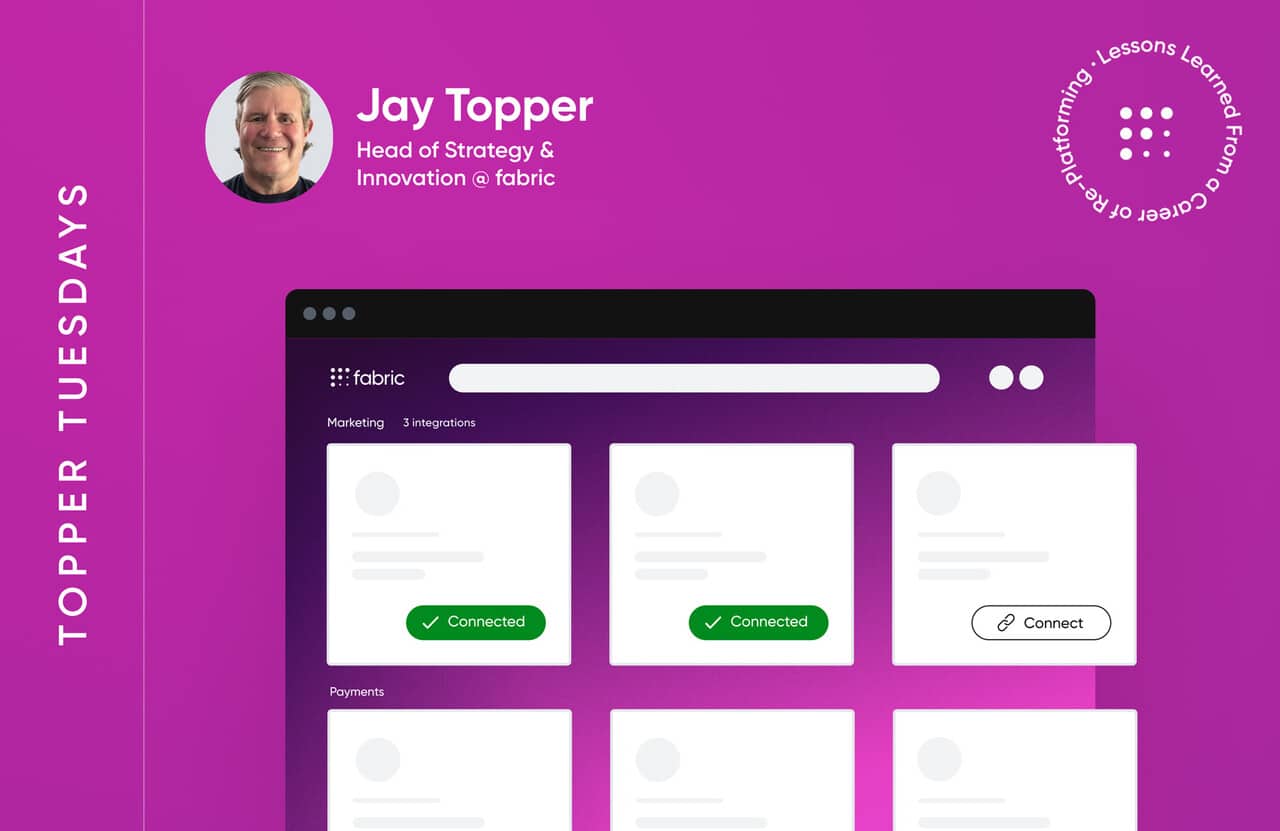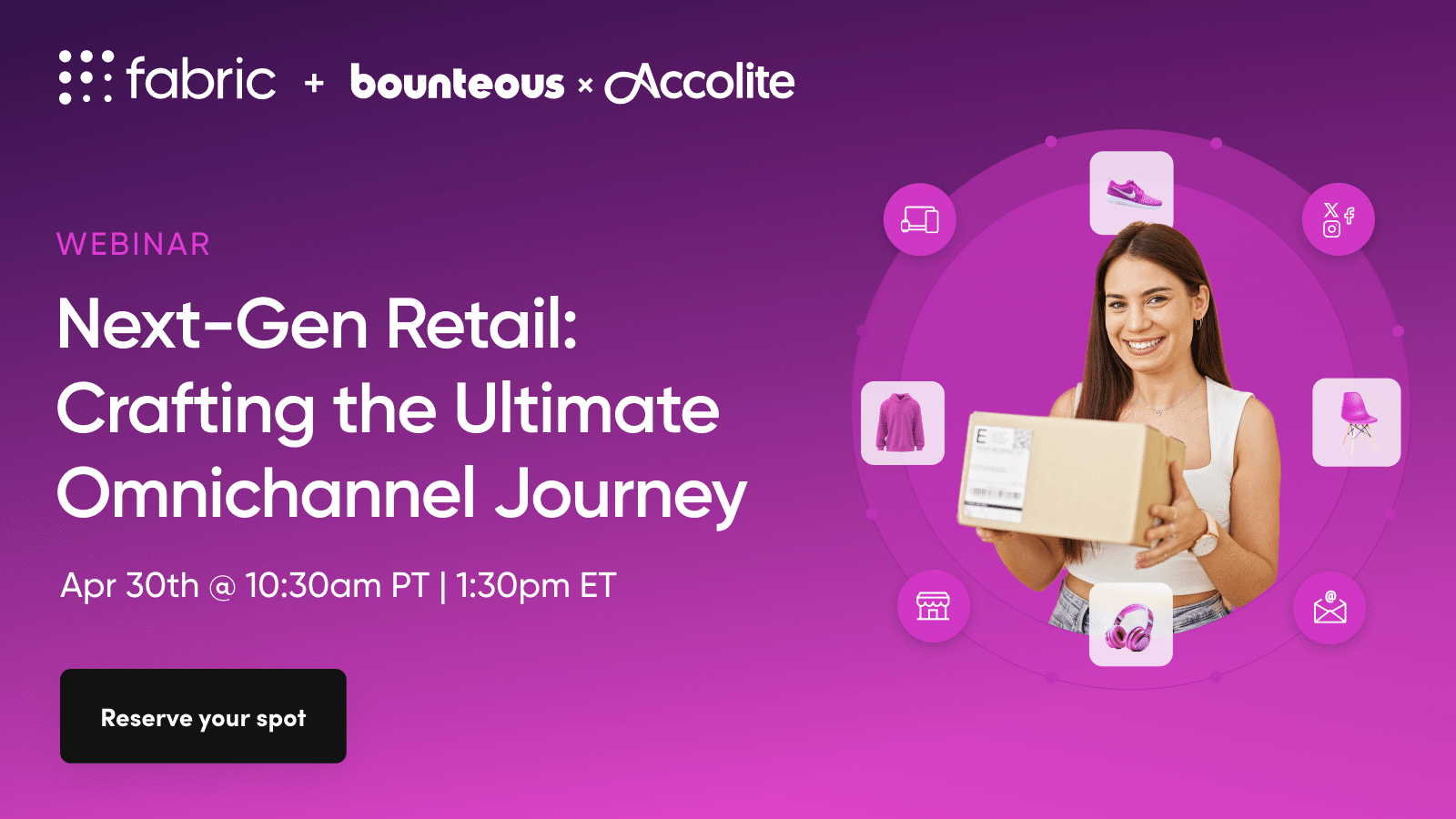Platforms and Partners: 5 key points to consider when making retail replatforming choices

So, let’s assume you have defined good reasons to explore a retail replatform. It’s one that everyone buys into, and the messaging up, down and around the chain of common is clear. (If you’re still searching for a reason to explore a replatform, first read my previous post here.)
Next, you need the platforms and the partners to help you realize the omnichannel retail dream. This and the next post will address this–it’s that important. Below, we will focus at a higher level, and next week, we will dig down deeper into the weeds of platform possibilities. It’s a jungle out there, with more trees popping up seemingly every week.
Finding the right retail platforms and partners
So, what are the key criteria for your retail business? Usually, you’ll begin with RFPs to get into the specifics around capabilities–or some form of analysis. I always kept a personal “CDO Scorecard” with what I believed was necessary to win. It included all of the associated teams’ feedback to fine-tune the scorecard during the selection process. At my last company, I was up to version 21 of the scorecard by the time I built my final board deck!
What’s the difference between a scorecard and an RFP? Well, the scorecard is an Excel sheet printed as a single 11×17 document, portrait (yes, picture it!). With providers across the top and criteria down the side, it is a summation of every criteria we are more formally analyzing, including my own research. An RFP helps you determine if a vendor can meet your criteria, and you’ll likely end up with a few that can. A scorecard helps you determine which vendor you want to be in the trenches for basically the rest of your tenure–and beyond.
I usually have 30+ criteria on my retail platform and partner scorecards. To anyone who also wants to go THAT DEEP, please reach out to me for a personal perspective!
But here, as my editors have told me the “perfect blog” is between 800-1200 words, I am going to focus on my top 5 scorecard criteria. I am leaving cost and time out (for now–stay tuned). Everyone looks at cost, but the key is believing what you hear. “Look ‘em in the eye,” as they say. I like using words like honor when discussing pricing, because your gut will tell you if you’re going in the right direction with a vendor.
Anyway…here are my top 5 scorecard items when searching for a vendor:
- Belief. Do you believe the product and partner will beat or succeed and exceed your expectations? Have you created a wave around this belief and addressed any gaps the vendor or partner might have?
- Alignment. Is there strategic alignment between your company and those you’re considering? You will never be perfectly aligned, but it has to be close! Do they fully grasp the omnichannel retail problems you are trying to solve, and will they add value and help you unlock things you have not yet considered?
- Culture. Do you “like” them? Are they culturally sound? If you are working through challenges and things get tense, is this the team you want in your foxhole? Will they play well with your other platforms–and trust me this is critical to avoid the blame game. I had one potential retail platform vendor tell me they “hated” one of our core systems, for no real reason–that became a deal breaker! Hate doesn’t belong in business.
- Modern approach. Is their technology and approach modern? This doesn’t only refer to technology! It’s also an approach, a foundational principle to replatforming, where you work in an agile fashion to launch components, functions, or parts when they are ready instead of just waiting for a big bang at the end (incremental!). Don’t be fooled by buzzwords and trends. Focus on solid, configurable technology that technicians and end-users will both embrace. Also, look at the vendor’s plan. In today’s retail workflow, incrementality rules. Both of these topics, technology and incrementality, will be a future blog post–they are that important!
- Risk mitigation. Have you jointly agreed upon the biggest risks to the program and how to mitigate them? As risks become mitigated, what’s the next biggest risk? My board has always asked me to define the greatest risk at every stage of the process. Frequently (if not always), this changes during an implementation as we attack each biggest risk.
Choosing from your shortlist
Using the scorecard method above on a recent retail replatforming at my former employer helped me narrow my list down to two firms I believed in. One of these I now work for. The other, I have worked with in some fashion for the last 15+ years. This is a shameless plug, but no less genuine than any word I have written in this series.
Let me take you back to those days, not so long ago.
It was September, 2022, a magical, unicorn of a replatforming project was on my plate. We implemented an e-commerce engine, an OMS, and several surrounding platforms (for example Vercel as the front-end).
The Retailer. It was a huge undertaking with an original go-live date in less than a year adding in 8 new platforms. The actual go-live was a month late. Inside the retailer–our company–it took an entire village. Product management, analytics, engineering, ecommerce and marketing operating as one–driving towards very pointed business outcomes–selflessly and in service. It required commitment and leadership–perpetual optimism! I am so incredibly beholden to the whole team–it was humbling and thrilling at the same time. And when that comes together, being a unified voice to the other executives and board became a matter of course, as did their support.
The same ethos is necessary with both the platform and partnership firms. It was an amazing three-way partnership (partner, platform, and retailer). This is the magic necessary to win. We called ourselves the “Troika.” We believed in each other and challenged each other down to the individual person, every step of the way.
Who completed that troika?
fabric was the core platform. I generally spend a large portion of analysis dissecting the product with a vendor’s product managers, engineers, and architects. It should never be all about technology, but you want to be aligned (and impressed) with those who built what you are committing to–and committing your career to.
In our case, we also wanted a strategy of “configuration” vs. “customization.” We didn’t want to fall back into the same “wait for engineering” to get things done. Obviously, I work at fabric now, so maybe this comes across as jaded. But, fabric is a product company focused on their customers’ outcomes. They are a smart, passionate, personable team, and to put it bluntly, they have built a great product that keeps getting better in the right ways for their customers.
Bounteous was the core systems integrator. Another stellar decision, even though I don‘t work for them. 🙂 But, I know them well. And, they learned fabric from scratch just to work on our retail replatforming project! It took three-way trust!
I worked with the Bounteous offshore team for more than a decade, way before they were known as Bounteous. Now, I know their U.S. team, too, and their program management and engineering is similarly excellent. Together, we created an incredibly high-functioning team that focused on solving problems, not finding fault. I think so highly of Bounteous, and would use them again in a heartbeat.Having an offshore component (the BEST offshore team I have ever worked with) extended the workday, lowered the cost, and directly contributed to our success!
My bottom line: fabric + Bounteous is a winning combination. That’s a FACT! In a later blog, I will outline why we succeeded–and how we could shave that time considerably with all that we have learned.
Topper talks tech in the next post
Next week, we are going to talk about some tech. I eschew tech for tech, and sometimes retail replatforming projects can become far too much of a technology religion that misses the real intent of technology–to enable outcomes at speed.
I’ve been managing technology since 1997. My “religion” is company success. But it’s important to understand what you are buying, so I am going to demystify some common terms–and probably use a few new ones of my own. Stand by!
Toppers Tips & Tricks: Platform & Partners: How to Choose?
- Don’t be buffaloed by experts and elitists who possess more data than judgment, and have fallen in love with themselves as “the only answer”* Make sure you understand what you are buying, and remember that jargon doesn’t increase conversion rates!
- Look for culture fit, just like when you make a hire. Bring your best, open self to severy interaction with every potential partner
- Speak to the doers such as the product and program managers, engineers, and architects.
- Run down perceived weaknesses–which translate to risks. Everyone has them, and the key is mitigating them.
- A great systems integrator with your second-choice platform is better than a lousy SI with your first choice platform! Trust me on this one.
*Colin Powell’s Lesson 3 in his “Leadership Primer.”
Join Me at the Forefront of Retail Innovation
If you’ve been following “Topper Tuesdays”, delving into the intricacies of retail replatforming and like what you’re reading, join me for a deeper dive into these topics at an upcoming webinar, “Next-Gen Retail: Crafting the Ultimate Omnichannel Journey.”
Together with my friend Jennine Loisel, EVP of Technology at Bounteous x Accolite, we’ll share firsthand the transformative journey we undertook with a leading women’s fashion retailer. Over a 12-month project, we reimagined their omnichannel strategy, achieving 30% lift in conversion. This is your opportunity to hear how strategic replatforming and strong partnerships can enhance your operations and customer experiences and I’m excited to discuss how these initiatives can help you accelerate your journey to a modern commerce platform.
Register now and let’s push the boundaries of what’s possible in retail together!

Advisor @ fabric
